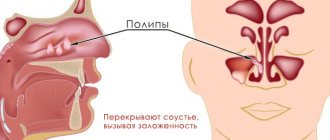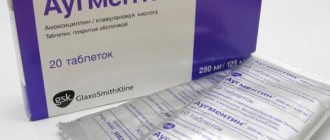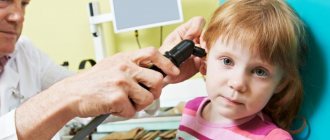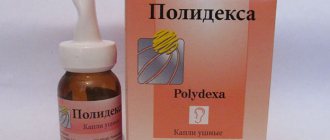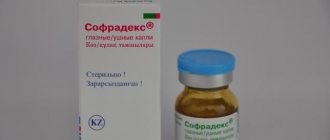Release form, composition and indications for use of boric acid
The drug is available in the form of a powder and an alcohol solution. The crystalline white substance contains 100% of the active ingredient.
From 0.5 to 3% acid is added to the alcohol solution. The rest of the volume is filled with 70% medical alcohol.
Boric acid is an excellent antiseptic.
Liquid medicine is used in the form in which it is dispensed by pharmacies. The powder is used to prepare aqueous solutions immediately before the treatment procedure.
Boric acid destroys pathogenic microorganisms and has an inhibitory effect on fungi and lice.
An alcohol solution is prescribed for otitis media. They cauterize weeping eczema and treat dermatitis spots.
The powder is used to prepare products for treating skin diseases and washing the eyes during conjunctivitis.
The use of boric acid is associated with certain risks. Penetrating into the body through mucous membranes and wounds, it tends to accumulate after prolonged use in organs and tissues and have a toxic effect.
Extensive treatment of open wounds can result in fatal poisoning.
Once in the bloodstream, the compound behaves relatively stable. After 12 hours it begins to be excreted by the kidneys. The better the function of the paired organ is preserved, the faster the acid will leave the body and have less negative effects.
It is not absorbed through intact skin.
Possible contraindications and side effects
Side effects occur only in case of long-term use of the drug without a doctor’s prescription.
In this case, convulsions, nausea and vomiting, diarrhea, and confusion are possible. In rare cases, toxic shock occurs. The instructions for use state that the alcohol solution is contraindicated for the following reasons:
- with a rupture or crack in the eardrum;
- in case of disorders associated with kidney function;
- during pregnancy and lactation;
- childhood.
Contraindications are associated with the good ability of the acid to be absorbed into the blood. Together with other substances, it enters the bloodstream, which leads to undesirable consequences.
The use of boric acid for ear inflammation is a good, time-tested remedy. It will help with unpleasant symptoms of otitis associated with sharp pain, congestion or other unpleasant symptoms that knock us out of the usual rhythm of life.
Boric acid in the ear: instructions for use
In powder form, the product is introduced into the ear canal by insufflation. The procedure is carried out in the postoperative period to prevent infection of damaged tissues.
Boric acid in the ear is a good remedy for the treatment of many diseases of the ENT organs.
The crystalline powder is blown into a special device called an insufflator, which distributes the product over the entire internal surface. The procedure can only be performed by an experienced doctor in a hospital setting.
For adults
Before administering the medicine, you need to clean your ears from accumulations of wax. This is done using a cotton swab or a bandage folded into a tampon, soaked in hydrogen peroxide.
To make the procedure easier, drops of peroxide can be placed directly into the ear canal. Hold for 10 seconds. Remove residues with dry cotton wool.
Heat the alcohol solution of boric acid under hot water or in a water bath to body temperature. Check to see if it's too hot by putting a little on your wrist.
After this, the adult must be placed on his side, with the affected ear facing up. Using a pipette, inject 3-5 drops of the medicine into the ear canal. In order for the solution to be distributed most evenly, you need to lie in the same position for 10 minutes.
After the patient gets up, some of the product may leak out of the ear. It must be collected and the ear canal covered with cotton wool for one hour.
If necessary, instill in the second ear in the same sequence.
For children
For children, a similar procedure can be performed in two ways. Introduce 2 drops of the product into the ear canal according to the described scenario. Or, without instilling the medicine inside, wet a cotton pad with it and stuff it into the ear canal for an hour.
Boric acid can be used under the supervision of an ENT doctor.
For children and adults, treatment is carried out 3 to 5 times a day. Do not exceed the indicated dosages. Treatment lasts no more than a week. The period can be reduced on the recommendation of a doctor.
Dosage forms of boric acid
Pharmacies offer the drug in the following forms:
- 3% alcohol solution for topical use;
- boric ointment 5%;
- powder, which is also used to fertilize plants.
Boric acid is a crystalline substance that is dissolved in water or alcohol. In the treatment of external otitis, boric acid and alcohol are the same thing.
In the absence of damage to the eardrum, a 3% alcohol solution of boric acid should be dripped for acute or chronic otitis media of the middle or external ear in adults, as well as for candidiasis, diaper rash, boils, and wet eczema.
The drug reduces the synthesis and structure of protein molecules in microorganisms, disrupts the division and development of their cells, and binds to infection. Excess boron impairs membrane function, integrity, spatial arrangement of atoms in the molecule, and permeability.
If boric acid is dropped into the ear, it warms and locally dries. Tissues accumulate the active substance and remove them very slowly, which causes the toxicity of the drug.
Is it possible to put boric acid in a child's ear?
This should not be done without examination by an otolaryngologist. Because if the tissues inside are damaged, the medicine can be absorbed and penetrate the blood.
Boric alcohol is instilled into the ear of children to eliminate acute pain.
Boric acid poses a certain danger to children. Due to the age of young patients, their renal function is almost always underdeveloped. Disposal of toxic substances is slower and more difficult. During careless treatment, there is a greater chance of getting poisoned.
Boric alcohol in the ear: instructions for children
- This drug is rarely prescribed for the treatment of children. Therefore, adults are often concerned with the question: “Is it possible to drip boric alcohol into a child’s ear?” A child's ear has a different structure from an adult's. Also, the kidneys of an adult are much better at removing substances from the body.
- In a child, they do not function so well, so removing poison from the body is quite a difficult task for them. For this reason, it is not advisable to use the drug on a child.
- This can be done, but very, very carefully. Basically, in this way, boric alcohol is used not only in the case of otitis media, but also when the cause of ear pain is some other factor.
- If a child feels pain or has a blocked ear, then boric alcohol is used as follows:
- warm the product to room temperature, this will speed up the onset of the effect of alcohol on the source of inflammation, and this will make the child more comfortable;
- No more than 1 drop should be dripped into the inflamed ear;
- After 20 minutes, but not later, use a cotton swab to remove any remaining alcohol from the child’s ear.
- Most often, one procedure is enough to eliminate ear pain and congestion. But this does not always indicate that inflammation has been completely neutralized.
- This course of treatment must be carried out for 7 days. Children need to drip the drug into the ear twice a day, but not more often. If the child begins to complain about side effects, treatment should be stopped immediately.
- If there are no signs of improvement within a week, you should immediately consult a doctor. If this is not done, turbootitis may begin to develop.
How to properly drip into the ear of adults and children?
A 3 percent solution of boric acid for the ears is prescribed for the treatment of otitis media for both adults and children. It has the greatest therapeutic effect.
There is an unspoken prohibition not to self-medicate without a doctor’s prescription. If you haven’t had a chance to be examined, it is better to insert a moistened cotton wool into your ear. You can instill the medicine into the ear canal if you are sure that there are no purulent processes.
The injected product must be heated. The cold solution causes spasms and irritation.
To ensure that the acid penetrates as deeply as possible into the ear:
- place the patient on his side;
- Pull your earlobe slightly with your free hand;
- With the other hand, using a pipette, drop the amount of medicine prescribed by your doctor into the hole.
To prolong the effect at night, you can put a turunda soaked in an alcohol solution in your ear.
If, along with boric acid, the administration of other antibacterial drugs is prescribed, they should be used an hour after the main treatment.
Boric acid 3 percent - methods of use for the ears
Immediately before instillation, the bottle of liquid is warmed in the hand to body temperature. You can hold the bottle in warm water at a temperature of 37–38C.
Turundas in the ears with boric acid
To carry out the most effective therapeutic measures using this solution, it is recommended to use turundas before bedtime. These are cotton swabs soaked in a medicinal substance. This method is convenient and safe. Benefits of using turunda:
- the medicinal solution is much better absorbed by tissues and mucous membranes and will not flow out of the ear canal;
- the drug will be evenly distributed throughout the ear canal;
- the duration of the medicine will be longer;
- the solution is affordable for most patients.
The disadvantage of this method is that if it is performed incorrectly, there is a risk of injury to the eardrum. Also, if you make the turunda too hard, you can damage the delicate skin of the ear canal.
If you leave a gauze pad in the ear for too long, an inflammatory process and unpleasant complications may develop. This method is suitable for the treatment of non-purulent otitis media. Sometimes after use you may feel itching and tingling. Usually such sensations go away on their own within a few minutes.
Before using turundas with boric acid, it is recommended to consult with an otolaryngologist. Only a doctor can decide in each specific case how appropriate it is to use this method.
Turundas are not used in case of complicated processes in the ear canal, during gestation, lactation, purulent otitis, individual intolerance to active components, and kidney diseases.
You can make turundas yourself using cotton wool, cotton pads or gauze.
Algorithm of actions:
- Before performing any manipulations, you should wash your hands thoroughly with soap.
- Take a small piece of cotton wool and stretch it in different directions. Roll into a small thin roll. Its length should not exceed 10 centimeters. This roller should be about two millimeters in diameter.
- Fold in half, twist both halves into spirals.
- At the end of all manipulations, the result should be a dense turunda, but at the same time quite soft.
You can also make it using cotton wool and a toothpick:
- Tear off a small piece of cotton wool and fluff it up.
- Take a toothpick and wrap the cotton wool around the toothpick.
- The result should be a conical flagellum about 3 centimeters long and about 3 millimeters in diameter.
To make a turunda from a bandage, you need to cut off a flap of no more than 10 centimeters. You need to twist the bandage into a tight roller. It is preferable to use this material for making turunda for children, since it is almost impossible for them to injure the delicate mucous membrane.
After the turunda is made, you need to use it correctly for treatment:
- Heat boric acid in a water bath. It shouldn't be hot.
- Soak the turunda in a warm solution.
- Next, carefully insert the roller into the ear canal using a screwing motion. The tip should be visible.
- Let it remain in the ear canal for three hours. During this time it will dry and can be removed.
- If necessary, take a clean cotton pad soaked in hydrogen peroxide and remove any remaining wax from the ear.
Repeat this procedure about three times during the day, observing intervals of about five hours. Turunda is also inserted at night. Do not forcefully screw it into the ear canal or insert it completely. This can cause injury to the eardrum.
Also, do not soak the flagellum with a large amount of medicine; a few drops are enough to make the roller wet. Also, you should not leave it in the ear for too long, as this may cause the development of an additional inflammatory process.
The duration of such treatment should be no more than a week. If there are no even minimal positive results after such a procedure, it is recommended to visit an otolaryngologist for examination and possible correction of the treatment regimen.
Side effects and overdose
With short-term use of the drug as an external agent, side effects are rare. Sometimes there is an increase in temperature at the injection site.
Every medicine has a side effect.
The penetration of acid into the bloodstream can be accompanied by nausea, diarrhea, headaches, confusion, peeling of the skin, and pale skin.
In case of an overdose, all the symptoms of intoxication appear: the condition accompanying poisoning, nausea, depression of consciousness, the development of shock or coma.
An acute condition is observed only when acid is accidentally ingested. Since the product is highly toxic, it should be kept away from children.
Side effects
When using boric alcohol in the ear, some unpleasant consequences may occur:
- Drunk;
- headache;
- dizziness;
- the appearance of seizures;
- clouding of mind;
- kidney dysfunction;
- nausea, vomiting;
- anaphylactic shock;
- intoxication of the body;
- stomach upset;
- disruption of the gastrointestinal tract.
We invite you to familiarize yourself with: Plum Renclod Soviet: description, cultivation and care
The most severe consequence of such therapy is deafness. Most often, it develops in children when treatment is carried out without medical assistance, with non-compliance with dosage and duration, as well as with inattention to contraindications.
If such manifestations occur, treatment should be stopped immediately and medical attention should be sought.
Side effects with proper use of the drug rarely develop, but still, with prolonged use of boric alcohol in the ear, conditions such as:
- convulsions,
- nausea,
- vomit,
- diarrhea,
- confusion,
- decreased amount of urine,
- toxic shock.
Complications can develop if the patient has a perforation of the eardrum, since alcohol can enter the middle ear cavity and cause a burn to the mucous membrane of the eardrum, which can prolong the inflammatory process in the middle ear and increase the duration of treatment.
Long-term healing perforation in this case leads to chronicity of the process and gradual hearing loss.
If symptoms of drug overdose occur, you must stop dripping the solution and carry out symptomatic treatment, including blood transfusion, hemodialysis, peritoneal dialysis. Side symptoms include:
- nausea, vomiting, diarrhea;
- local skin irritation, redness of the integument;
- skin rash, desquamation of epithelium, purulent skin condition;
- headache, confusion;
- convulsions, shock (even death);
- a sharp decrease in the amount of urine excreted;
- heart failure;
- overexcitation or lethargy;
- erythematosis, jaundice;
- disruption of the liver and kidneys, collapse.
Contraindications for use
Before treating the ear with an alcohol solution of boric acid, you need to make sure that there are no purulent processes occurring in it. Injection of acid is not allowed for otitis media accompanied by discharge.
Before use, you should consult a specialist.
Contraindications include individual intolerance and pregnancy. The drug is prescribed to children from the second year of life.
Indications for use
As you know, boric alcohol for ear pain is one of the most effective and frequently used remedies. It can be used to treat ear pain in the following cases:
- otitis externa;
- otitis media (before perforation of the eardrum);
- ear congestion (cause – severe hypothermia);
- ear pain due to a cold;
- ear pain due to a viral infection;
- boil in the ear canal;
- ear injuries.
If these indications are available, an alcoholic solution of boric acid is used in the ear for instillation or insertion of cotton wool soaked in it. Often this product is used to make compresses to warm the ear.
But before treating the ear with boric alcohol, it is necessary to correctly identify the symptoms in order to avoid undesirable consequences. This should be done by a specialist who will directly monitor the course of the disease and its treatment.
It is also worth remembering that not in all cases when the ear hurts, you need to use boric alcohol. You should pay attention to the following recommendations:
- It is possible to treat ear congestion with boric alcohol only when it is a symptom of otitis media. For other reasons, the drug will not be beneficial or will cause harm;
- not all types of otitis are amenable to therapy with boric alcohol.
The use of boric alcohol for otitis media in children has its own indications and contraindications. Namely:
- The drug is not prescribed for babies under 1 year of age;
- preparing the drug for treating children involves heating it to room temperature;
- You can instill the drug only one drop into each ear, after which you need to insert a cotton swab to absorb any remaining moisture.
The prescription of boric alcohol for instillation into the ears of a child with otitis media and its dosage can and should be prescribed only by a doctor after conducting appropriate medical studies.
Treatment of the ear with boric alcohol has a number of contraindications, which are important to know about in order not to cause irreparable harm to health. Such contraindications include:
- pregnancy;
- breastfeeding;
- renal and liver failure;
- individual intolerance;
- allergic reactions;
- children under 15 years old.
Another contraindication is the discharge of pus. In this case, the use of the product is strictly prohibited! It is also undesirable to use it for various skin lesions.
If no contraindications are observed, but treatment of otitis with this remedy causes negative sensations, its use should be discontinued and consult a doctor.
It is difficult to determine at home whether there is perforation or not, since the characteristic leakage of pus or mucus from the external auditory canal can also be a sign of external otitis, so an in-person examination by a doctor is necessary in any case. Moreover, sometimes perforation can be pinpoint, and suppuration remains unrecognized by the patient, but boric alcohol in the ear, even with minor perforation, remains no less dangerous.
Contraindications
The official instructions for use note that the drug is contraindicated in the following situations:
- When the eardrum is perforated,
- In case of severe renal impairment,
- During pregnancy,
- During the period of breastfeeding,
- In children under 16 years of age.
The presence of such contraindications is explained by the fact that boric acid can be absorbed by the mucous membranes with the substance entering the systemic circulation and excreted by the kidneys within several hours. However, pediatric otolaryngologists in almost all cases of exudative otitis media without perforation recommend instilling boric alcohol into the ear of a child over one year of age and consider it safe if the dosage and frequency of instillation of the drug into the baby’s ears is strictly observed.
Due to the fact that a few decades ago, ears were treated mainly by instillation of boric alcohol and alcohol compresses, most patients are confident that only these measures can relieve ear pain and cure otitis media.
However, modern otolaryngology provides a wide range of drugs in the form of drops that have not only analgesic, but also anti-inflammatory and antimicrobial effects. Therefore, as a rule, boric alcohol in the treatment of otitis is used only as an auxiliary method. Immediately after the doctor has made a diagnosis of otitis, he prescribes more modern ear drops - Otofa, Anauran, Otipax, Otinum, Otirelax, etc., and only in parallel with them or after 5-7 days of treatment recommends boric alcohol as a way to consolidate what has been achieved from other drugs effect.
Instillation of drops is carried out as follows - after toileting the external auditory canal, a bottle or pipette with the collected solution is heated in the palm of the hand for several minutes and 3-4 drops of boric alcohol are instilled into the ear of a child and 5-6 drops into an adult. After instillation, you need to lie down for 5-10 minutes on the opposite side, and then place a piece of dry cotton wool in the ear canal to hold the solution in the ear.
The frequency of instillation is three times a day for the first 3-5 days and once at night for the next 5-7 days. Treatment with boric alcohol should not exceed more than two weeks in total.
When instilling the drug in the ear, unpleasant sensations may appear - burning, itching, tingling, which go away on their own within a few minutes. If severe unbearable pain or dizziness occurs, or if discomfort in the ear persists for more than half an hour, you should consult a doctor as soon as possible and do not use the drug in the future without the permission of an otolaryngologist.
Placing turunda into a sore ear is more effective, since alcohol does not leak out of the ear and the active substance is evenly distributed throughout the ear canal, maintaining activity longer than when instilled. In order to make a turunda, you should take a small piece of dry cotton wool, twist it into a flagellum, moisten it with a solution heated in your hand and place it not too deep into the ear canal.
Warming compresses should be used with caution, since heat is contraindicated during an active inflammatory process. However, a single application of a compress at night is acceptable if medical assistance is currently difficult to obtain, and acute ear pain causes severe discomfort and anxiety. Such a compress can be given to a child older than one year, if the baby’s mother is sure that it is his ear that hurts.
warm compress on the ear
To do this you need to perform a number of simple steps:
- Take a piece of thin cotton fabric and make a longitudinal cut from the top to the center. The result is so-called “pants” with a slot for the ear.
- Cut the next piece of fabric, bandage or gauze in the same way.
- Apply the first dry layer to the skin to prevent skin burns, then moisten the second layer in heated boric alcohol and apply it to the first layer, carefully placing the slot on the auricle so that it remains outside the compress.
- Next, cover the fabric with a piece of polyethylene, a layer of dry cotton wool on top and secure the compress with a bandage or scarf. For pain in both ears, you can apply compresses to both ears together or alternately.
- The fabric should be re-wetted with warm boric alcohol every 30-40 minutes; the compress will hold for about two hours.
A pregnant woman should know some nuances regarding boric alcohol in the ears, namely:
- Due to the fact that boric acid is a toxic substance and can be absorbed into the blood with prolonged use, pregnant and lactating women are strictly contraindicated from using the drug in the ears.
- If you experience acute ear pain during pregnancy, you should consult a doctor who will prescribe more modern and safer ear drops,
- You should not delay visiting a doctor, since as the inflammatory process progresses, you may need oral antibiotics, which is not always beneficial for the unborn baby, and at the onset of otitis media, the chances that the inflammation can be dealt with only with ear drops are quite high.
Some mothers of children who are often susceptible to otitis media often wonder whether it is possible to drip boric alcohol into the ears to prevent inflammation of the middle ear and at the initial signs of a runny nose in a child. Considering that children attending kindergarten most often suffer from otitis, and they almost always have a runny nose leading to otitis, it is suggested that alcohol be instilled almost daily into the child’s ears. The answer to this question is clearly negative, since long-term treatment of the ear with boric alcohol is prohibited due to the risk of side effects.
For adults, boric alcohol is prescribed for acute and chronic otitis externa. Turundas (small narrow gauze swabs) are moistened with a solution and inserted into the ear canal. To treat affected areas of the skin with purulent inflammation (pyoderma), the skin is treated with rubbing. The course of treatment of chronic otitis media with an alcohol solution should not last more than a week, otherwise there is a risk of accumulation of toxins.
We suggest you read: The use of pumpkin seeds in the treatment of prostatitis
A 10% solution with glycerin is used to lubricate diaper rash and colpitis. When treating pediculosis, ointment is used. During operations after eliminating otitis media, powder can be used - insufflation or insufflation is performed. The course of therapy, dosage and method of administration are prescribed by the doctor after an individual examination of the patient and determination of the characteristics of the body. It is better not to self-medicate, because the acid is toxic.
Boric alcohol in the ear
If symptoms of otitis are detected, microbes have got inside the sink, boric alcohol will help in the child’s ear. After the first procedure, relief comes and the pain subsides. Instructions for its use:
- warm the medicine to room temperature in a water bath (cold medicine can lead to a sharp increase in ear pain);
- place one drop inside each child’s ear;
- after a minute, insert a small cotton wool so that it absorbs the remaining moisture;
- repeat twice a day until improvement occurs.


